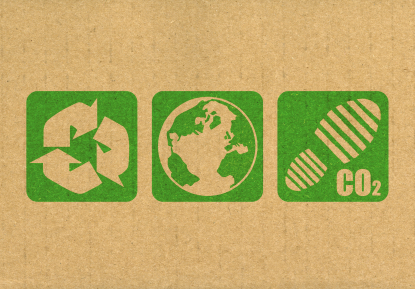Six Strategies for Sustainable IT
 This article has been contributed by Tanya Kristiansen from Open iT, inc.
This article has been contributed by Tanya Kristiansen from Open iT, inc.
Everyone knows it isn’t just business as usual. The climate is warming up, and species are dying out at an alarming rate. We are in a climate/resource crisis, and the broad solution to it requires sharing, or redistributing resources.
IT managers embracing the values of sharing and thrift can improve their bottom lines while cutting carbon emissions and corporate waste. Gains in profits accompanying reductions in environmental damage can be made on two levels: by mitigating the residual effects of IT use, and by shaping new, positive ways of sharing technology through virtualization of services, dematerialization and the smarter use of IT throughout organizations.
Companies that want to survive will gain competitive economic advantages by adopting new Green IT strategies and solutions, where resources are better utilized, enabling more productivity and reducing waste. Through technological innovation and structural changes, Green IT offers mitigation of direct, negative consequences of IT and creates indirect, positive effects information technology has on the environment.
With high energy and carbon price tags, cutting power usage is important in Green IT. Initiatives for reducing IT environmental damage include recycling, use of energy-efficient equipment, and virtualization of services through cloud and grid computing, and consolidating servers in green data centers. Tailored third-party solutions, where functions are offered as adaptive services and economic and technological risk is carried by the third party, can in many cases provide the stimulus to entice users to choose a new solution, like Google Apps.
Offerings which provide greater efficiency, productivity, and more value to customers will be most popular, like cloud computing which saves space, energy and maintenance expenses, while providing customers with flexibility and choice. Enterprise resource management is another good example: each installation, machine and system in use can be metered, so control mechanisms and other technology can improve operational efficiency. Excess resources can be taken from one process and used in another. In one case at Hydro in Norway (now Statoil), the head of Enterprise Architecture used Open iT optimization software to reduce their high-end workstations from 357 to 50.
Large companies including IBM, Facebook and Hydro are harvesting electricity from datacenters to be used for heating elsewhere. IT automation and optimization of data centers is widespread, and Google (and soon IBM) keeps their data center underground in Iceland to save on cooling bills. Energy efficiency and capacity of hardware components, including servers and Flash memory, has improved dramatically, as the ICT sector continues to roll out energy efficient devices, applications and networks.
We are on the verge of a paradigm shift. In the new paradigm, as material is increasingly replaced by intelligent services, industry is moving from producing disposable technology towards sustainable technological solutions that conserve resources. New industry is based on services and knowledge, where goods are delivered virtually as bits instead of as atoms. As companies replace physical goods and transport with digitalized services, the shift from physical commodities to virtual ones has a much lighter CO2 burden. Dematerialization can reduce the environmental impact of our energy use and resulting emissions by using information technology to change processes to reduce total resource usage.
While IT managers can embrace dematerialization technology trends to lighten their company’s carbon footprint, there are additional steps each one can take to lighten the load.
Six Strategies for Sustainable Information Technology:
- Make a measurable, implementable Green IT plan (and garner support for it from top management).
- Measure and optimize your IT assets. How can you save if you don’t know what you have? Use an analytical software tool to get complete information about which hardware and software is being utilized, and use your findings to improve efficiency.
- Set standards for IT equipment, from purchase through disposal. Always buy those with the best carbon rating, featuring replaceable, standardized components.
- Include IT power usage in the IT department’s budget, and make usage cuts. Few IT budgets include all the power bills related to servers and computer equipment. IT managers will buy Green IT equipment, and turn off machines during the weekend, if they can improve their budgets by doing so.
- Push for convergence in design standards in your industry. Just as China has called for universal cell-phone chargers, all manufacturers should strive to make universal standards.
- Promote operational resource savings throughout the organization, not just the IT department value chain. Use IT tools to reduce carbon footprints for power usage through temperature control and lighting, to improve employee productivity through collaboration and training, and through dematerialization throughout the organization.
Companies who can adjust quickly to changing markets will get more out of their workforce, capital and other resources. Open iT is committed to helping companies get lean and green, and them save money by cutting waste and optimizing their IT resources.
This article has been contributed by Tanya Kristiansen from Open iT, inc.
Related articles:
Bringing together all aspects of technology asset management: Interview with Piyush Patel, ServiceNow
The business case for IT Asset Lifecycle Automation
Whose responsibility is it to save costs in the Cloud?
Higher priorities and lack of understanding hinder ITAM
What IT Assets should I be managing?
How many machines, really?
About Martin Thompson
Martin is also the founder of ITAM Forum, a not-for-profit trade body for the ITAM industry created to raise the profile of the profession and bring an organisational certification to market. On a voluntary basis Martin is a contributor to ISO WG21 which develops the ITAM International Standard ISO/IEC 19770.
He is also the author of the book "Practical ITAM - The essential guide for IT Asset Managers", a book that describes how to get started and make a difference in the field of IT Asset Management. In addition, Martin developed the PITAM training course and certification.
Prior to founding the ITAM Review in 2008 Martin worked for Centennial Software (Ivanti), Silicon Graphics, CA Technologies and Computer 2000 (Tech Data).
When not working, Martin likes to Ski, Hike, Motorbike and spend time with his young family.
Connect with Martin on LinkedIn.

